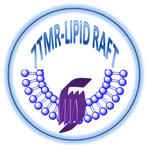Colocalization of beta-adrenergic receptors and caveolin within the plasma membrane
| Title | Colocalization of beta-adrenergic receptors and caveolin within the plasma membrane |
| Publication Type | Journal Article |
| Year of Publication | 1999 |
| Authors | Schwencke, C, Okumura S, Yamamoto M, Geng YJ, Ishikawa Y |
| Journal | J Cell Biochem |
| Volume | 75 |
| Pagination | 64-72 |
| Date Published | Oct 1 |
| ISBN Number | 0730-2312 (Print)0730-2312 (Linking) |
| Accession Number | 10462705 |
| Keywords | *Caveolins, Animals, Blotting, Western, Caveolin 1, Cell Membrane/*metabolism, Centrifugation, Density Gradient, COS Cells, Fluorescent Antibody Technique, GTP-Binding Proteins/metabolism, Membrane Proteins/*metabolism, Protein Binding, Receptors, Adrenergic, beta/*metabolism, Recombinant Proteins/metabolism, Spodoptera, Transfection |
| Abstract | The rapid amplification of beta-adrenergic receptor signaling involves the sequential activation of multiple signaling molecules ranging from the receptor to adenylyl cyclase. The prevailing view of the agonist-induced interaction between signaling molecules is based on random collisions between proteins that diffuse freely in the plasma membrane. The recent identification of G protein alpha- and betagamma-subunits in caveolae and their functional interaction with caveolin suggests that caveolae may participate in G protein-coupled signaling. We have investigated the potential interaction of beta-adrenergic receptors with caveolin under resting conditions. beta1- and beta2-adrenergic receptors were recombinantly overexpressed in COS-7 cells. Caveolae were isolated using the detergent-free sucrose gradient centrifugation method. beta1- and beta2-adrenergic receptors were localized in the same gradient fractions as caveolin, where Gsalpha- and betagamma-subunits were detected as well. Immunofluorescence microscopy demonstrated the colocalization of beta-adrenergic receptors with caveolin, indicating a nonrandom distribution of beta-adrenergic receptors in the plasma membrane. Using polyhistidine-tagged recombinant proteins, beta-adrenergic receptors were copurified with caveolin, suggesting that they were physically bound. Our results suggest that, in addition to clathrin-coated pits, caveolae may act as another plasma membrane microdomain to compartmentalize beta-adrenergic receptors. |
| URL | http://www.ncbi.nlm.nih.gov/entrez/query.fcgi?cmd=Retrieve&db=PubMed&dopt=Citation&list_uids=10462705 |
